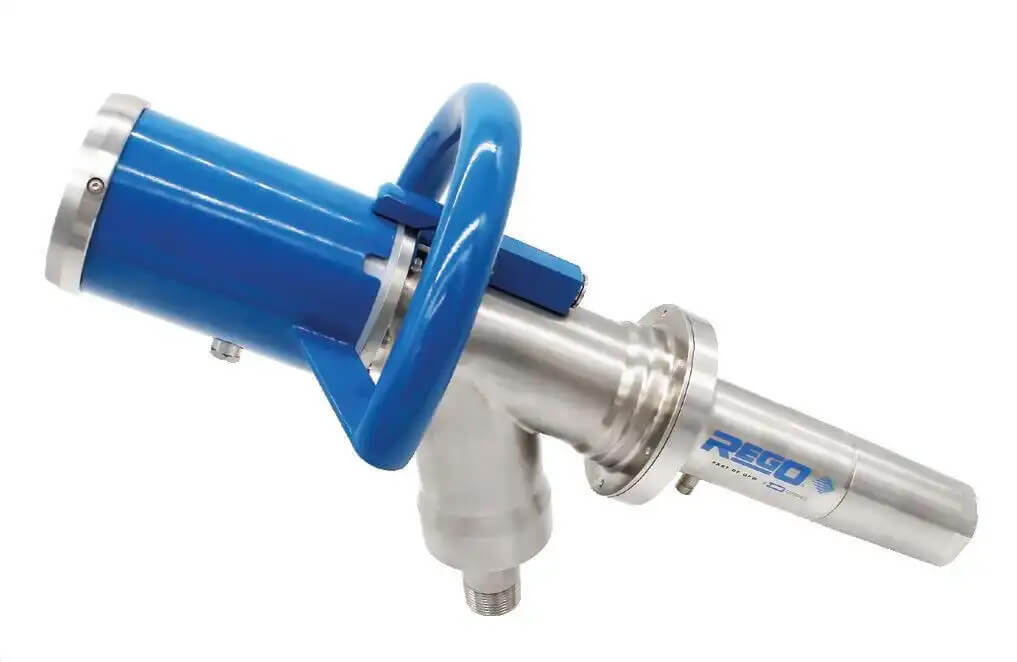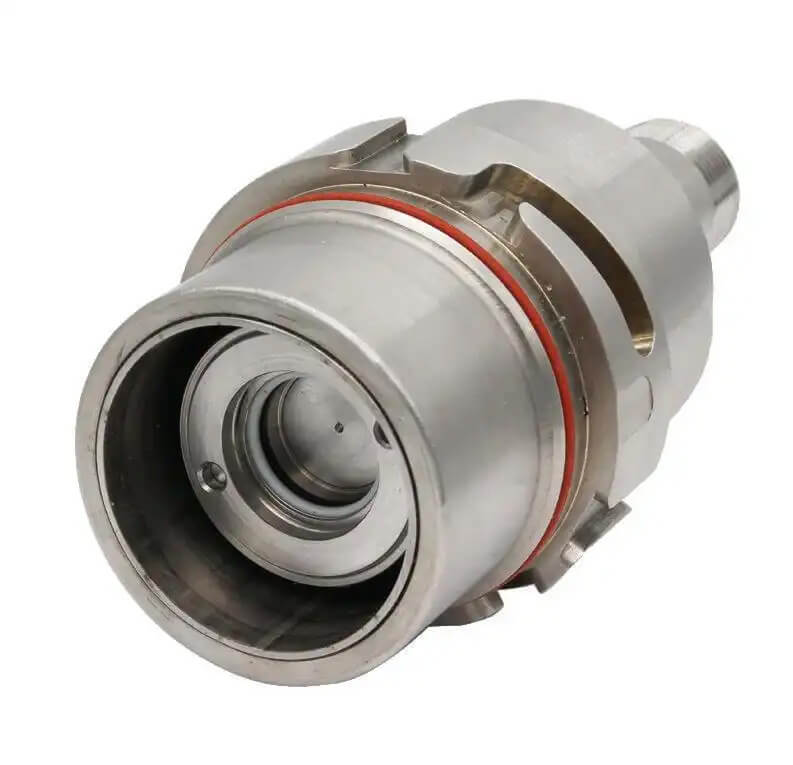
It’s a fact of life in industrial processing that, in order to accomplish “good” things, you must sometimes have to work with potentially “bad” things. Such is the case with liquid hydrogen, or LH2. As the industrial world continues to look for new ways to move away from the use of traditional fossil fuels to power vehicles and industrial processes, a number of alternatives have begun to rise to the fore.
For the most part, this quest to expand the energy pool via “green” clean energy alternatives is being driven by Environmental, Social and Governance (ESG) initiatives aimed at reducing the high carbon footprint, greenhouse gas emissions, and ozone depletion potential that are implicit in fossil-fuel usage, which many argue are at the forefront of global climate change.
While propane and liquid natural gas have traditionally been the most popular amongst the new wave of clean energy fuels (with Europe, China and India leading the way), hydrogen has begun to gain additional attention and momentum as another promising alternative. In fact, in 2021 the U.S. Department of Energy announced the creation of the Regional Clean Hydrogen Hubs program offering $7 billion in grants to companies that would like to develop more hydrogen liquefaction plants, with many traditional oil-and-gas producers showing interest in expanding their horizons into the LH2 universe.
In late 2023, seven hub projects were selected for funding through the program, shaping a network of new liquefaction facilities that will eventually span the country from the Mid-Atlantic to Pacific Northwest, and the Gulf Coast to Upper Midwest. But the challenges that are inherent in the dispensing of LH2 must be overcome before the fuel can assume a prominent place in the world’s motor-fuel pool.
To that end, enterprising companies are looking for ways to optimize the dispensing of LH2 in terms of efficiency, reliability—and safety—through the development of innovative dispensing technologies, all while making the refueling process for the consumer as similar and familiar to that of the traditional service station as possible.
The Challenge
While LH2 can theoretically be used to power all motor vehicles, its capabilities make it a top choice as a reliable and efficient fuel for use in long-haul vehicles such as transport trucks, planes, barges and ships. However, getting the fuel from point A to point B in the supply chain, and in the massive amounts in which it is needed, can be problematic.
While LH2 possesses great potential for growth as an energy source (buoyed by its carbon-neutral status and environmentally sensitive emissions of water and air), the volatile nature of LH2 can make it challenging to harvest, refine, transport, dispense and consume. This makes ensuring safety for the handler and environment Job No. 1 along its production and supply chain.
With a working temperature of -423ºF (-253ºC), which is close to absolute zero, or -460ºF (-273ºC), LH2 is one of the most challenging cryogenic gases. This means that the equipment used to dispense LH2 must contain massive amounts of thermal insulation in the dispensing nozzle to prevent huge ambient losses in volume from evaporation as the fuel is being dispensed.
Another phenomenon with LH2 nozzles is the occurrence of hydrogen embrittlement. It’s a physical fact that all metals will be detrimentally affected at some level by hydrogen, with the level of exposure helping to determine if any embrittlement will occur. If a metal does experience hydrogen embrittlement, it can result in noteworthy losses in tensile strength, ductility and fracture toughness, along with accelerated fatigue-crack growth. When the level of embrittlement reaches a critical point, the result can be catastrophic failure of LH2-containing components.
To lessen the risk that hydrogen embrittlement will take place in an LH2-dispensing nozzle, metals that are more resistant to hydrogen embrittlement should be used, such as high-quality stainless-steel grades. Sealing on moving parts is another area where precision in material selection and engineering must be optimized in order to ensure a safe refueling solution.
Many common elastomers are not suitable for use with cryogenic substances. The recommended seal type is one constructed from polychlorotrifluoroethylene, or PCTFE. PCTFE stands out in cryogenic service because of its high tensile strength and good thermal characteristics. This combination of exceptional physical characteristics and stability at ultra-low temperatures makes PCTFE an ideal choice for equipment used in LH2 dispensing.
Additionally, the nozzle must be constructed so that there is no chance that leakage will occur. If a leak does happen, the nozzle’s operation must be able to be instantly halted in order to prevent a potentially dangerous scenario from developing. On top of that, the nozzle must possess automated flow-control capabilities that enable the operator to be physically situated at a safe distance as the refueling process takes place.
One final operational concern with LH2 is the potential for the buildup of condensed liquid air on the nozzle during a refueling activity. This condensed liquid air is extremely combustible liquid oxygen. Therefore, the LH2-dispensing system must be jacketed and have an extremely high vacuum in order to keep the outer surfaces at ambient temperature so there can be no buildup of liquid air.
The Solution
Recognizing the challenges that are the hallmark of LH2 handling—ensuring safety in every instance—companies that specialize in the development of systems and components for use with clean energy alternative fuels, such as LH2, have put on their thinking caps to find solutions to these challenges.
One notable development has been the creation of a fueling nozzle that is designed to be a robust LH2 transfer and dispensing solution that can replicate a safe and reliable traditional diesel-like handling and dispensing experience for the consumer.
This next-generation nozzle offers the following features and benefits:
- Unique design that diminishes complexity in LH2 dispensing
- Built-in leak-detection capability
- Automated fuel control that enables the operator to remain in a remote location during the refueling process
- Three-stage thermal-isolated method of operation that optimizes efficiency and performance
- Jacketing that meets the low-temperature handling requirements of LH2 and resists the dangerous buildup of liquid air
- Lighter weight for easier handling
These features and benefits, along with the safety-inducing operational capabilities, make the nozzle very intuitive to use. The removal of any ambiguity in its handling or operation also allows the sellers of LH2 to create a dispensing process that mimics the “culture” of traditional vehicle fueling, which can help ease any concerns the consumer may have when dispensing an unfamiliar fuel.

Conclusion
There’s no getting around it, the clean energy future is coming. In order to optimize its potential from a production, supply, financial and safety aspect, it must be outfitted with equipment and systems that are able to meet the unique handling characteristics of the growing roster of clean energy fuels. In that vein, LH2 stands poised to assume an elevated role in the nation’s motor-fuel pool, especially as it relates to the fueling of large vehicles.
Producers and suppliers of LH2 must be fully aware of the “bad” characteristics that are fundamental to its handling and dispensing, so they can realize the “good” that can come from its use. Suppliers to the clean energy market have taken a positive step forward in that quest with the development of new technologies for an optimized, mainstream and inherently safe LH2-refueling operation.
About the Author:
Felipe Machado is the Senior Director of Commercial, Product, and Marketing for Hydrogen and Cryogenics for OPW Clean Energy Solutions, a company formed in December 2021 when OPW acquired both ACME Cryogenics and RegO Products. Since then, the company has continued to expand its reach as a supplier of clean energy fluid-handling equipment and systems with the acquisitions in 2024 of Demaco, Marshall Excelsior Company (MEC), and SPS Cryogenics/Special Gas Systems (SPS-SGS). Felipe can be reached at: felipe.sperdutimachado@opwces.com